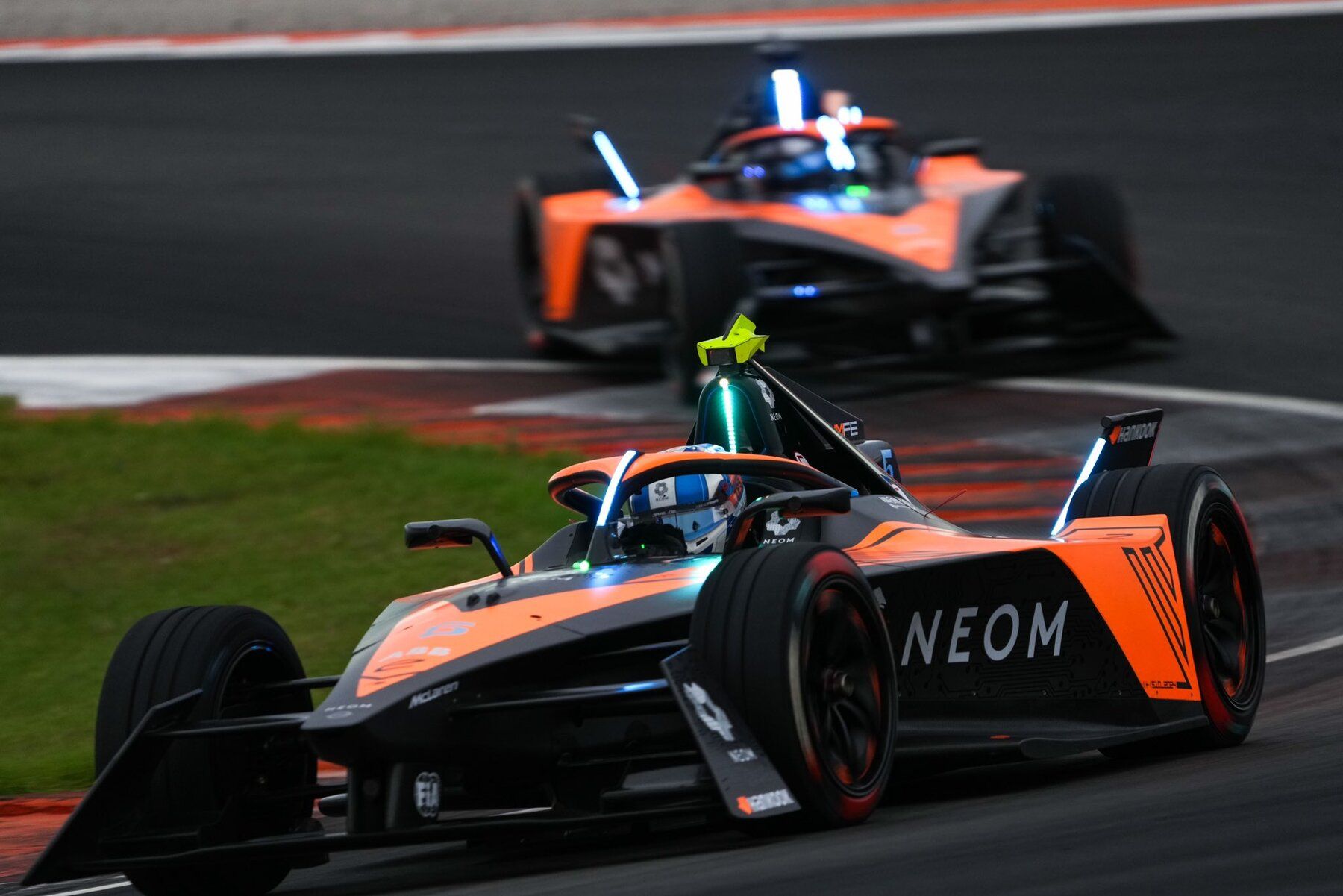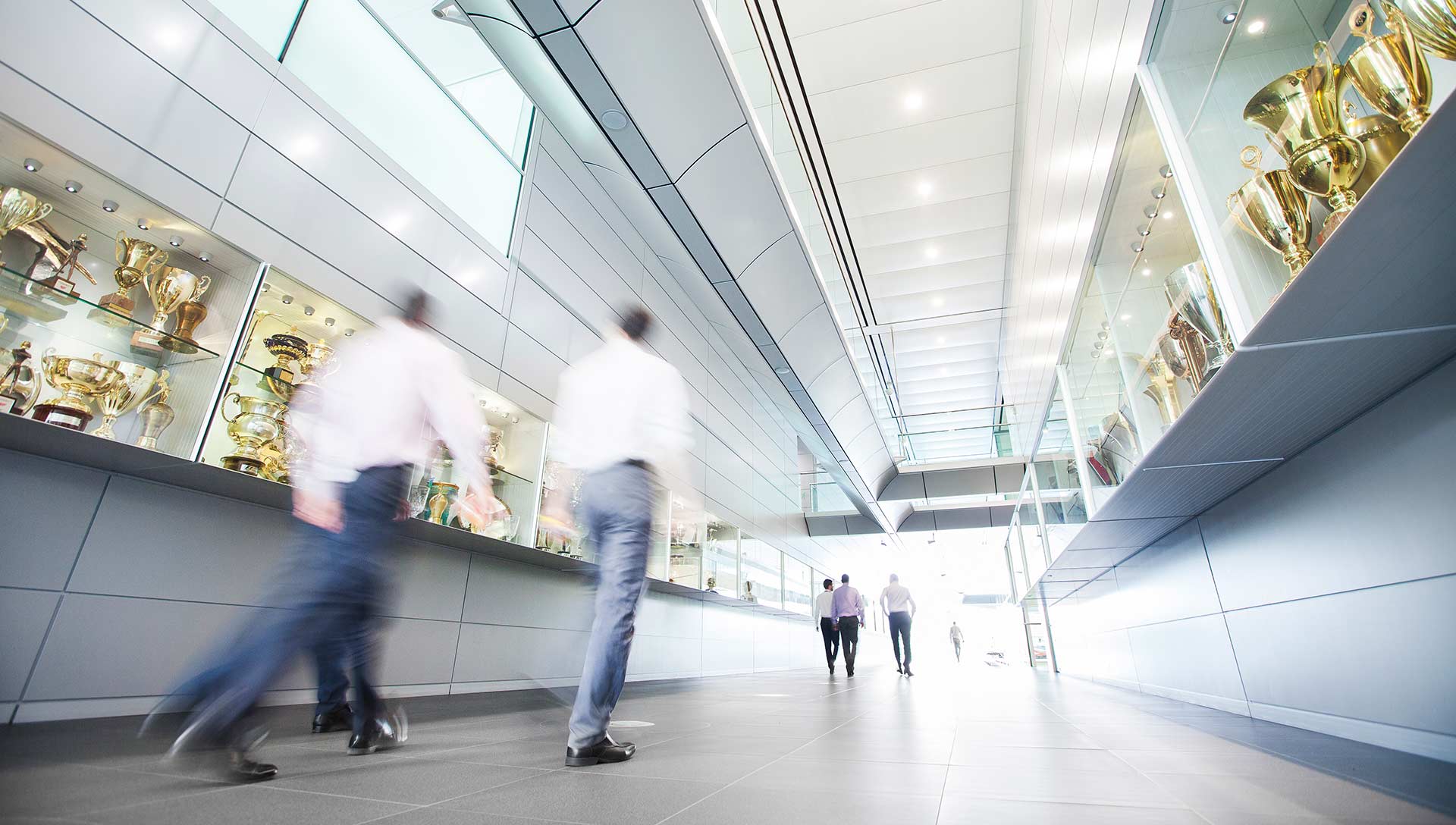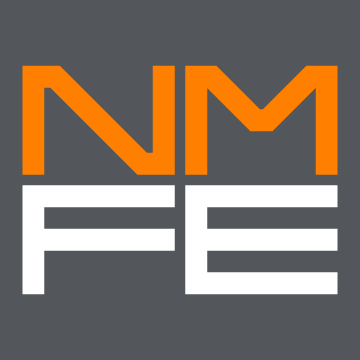
A McLAREN fan's guide: Formula E
FE explained: From personnel to tyres, the race weekend format and Attack Mode

Your one-stop shop for all things Formula E. This is your guide to the all-electric series and the NEOM McLaren Formula E Team. Simple, straightforward, and easy to understand.
We enjoyed a scintillating first season in Formula E and the team gained a legion of passionate new supporters from around the world who enjoyed the thrills and spills of our new racing adventure.
But we want to take even more of you on our electric journey, so we’ll need to ensure you’re up to speed by the time the lights go out. Whether you’re a complete beginner, or you understand the basics, but want greater insight into how the series works, we’ve got you covered with our ultimate guide to Formula E.
We know that getting to grips with a new series can be daunting, so we’ve kept it simple and concise. This is exactly what you need to know to enjoy our second season in Formula E – no more, no less.

Pre-season testing took place in Valencia at the end of October
Who will be driving for the NEOM McLaren Formula E Team?
Our rookie star of 2023 remains, with Jake Hughes signing on for another season with the NEOM McLaren Formula E Team, but we were left with big racing boots to fill on the other side of the garage, as René Rast took the difficult decision to depart Formula E to pursue other opportunities.
The German driver clinched our first two podiums in the all-electric series and played a key role in establishing us in FE, helping us to understand the Gen3 car with his insightful feedback and talent on track.
The team swiftly selected the experienced Sam Bird as the ideal replacement and wasted little time in drafting in the British driver. Sam arrives with a big reputation in the series, having raced in all nine seasons, winning 11 times and taking 26 podiums in 112 starts.
Sam knows the team well, having grown up in Walton-on-Thames in Surrey, a short drive from the McLaren Technology Centre, and has previously worked with several members of our team, including his engineer, Stephen Lane. The 36-year-old’s expertise in FE, and his race craft, could play a key role this year.
Jake will be looking to build on a strong first season, where he took two poles, including in the second round in Saudi Arabia. The Birmingham-born driver will be aiming to add to that, as well as targeting podiums and wins.
For the 2023/24 season, the team will be aided by its new Reserve and Development Driver, Taylor Barnard. The Norwich-born prodigy is a Formula 3 race winner and was the 2022 ADAC Formula 4 runner-up. As part of his role with NEOM McLaren, he will contribute to the team’s development, while growing his knowledge and experience.

Sam Bird and Jake Hughes make up our Season 10 driver line-up
Who is in charge of the NEOM McLaren Formula E Team?
Bringing Ian James across from the Mercedes-EQ Formula E Team to become our Managing Director was a major coup. During his time with Mercedes, Ian built the series’ foremost dominant team, overseeing two Drivers' and Teams' World Championship title wins.
A recognisable face at the McLaren Technology Centre, Ian began his career with McLaren Automotive as a Manufacturing Engineer, and returned as Team Principal of the NEOM McLaren Formula E Team and Managing Director of NEOM McLaren Electric Racing.
He is assisted by Team Manager, Gary Paffett, who followed him across from the Mercedes-EQ Formula E Team and focuses on the sporting and technical aspects of FE. Gary is a two-time DTM Champion who has also previously raced in Formula E and Formula 1.
What is the weekend format?
A lot of action in a short space of time. Almost an entire race weekend is squeezed into a single day, making FE events extremely fast-paced and exhilarating. Perfect for a newcomer, and minimal disruption to the streets of the city where the event is taking place.
There is an initial 30-minute practice session on a Friday, but after that, all of the action takes place on a Saturday. There is a further 30-minute practice on Saturday, before qualifying, and the E-Prix later that day. As with any practice session, laps are timed, but the results don't count for points.

Team Principal Ian James (L) with Team Manager Gary Paffett (R)
How does qualifying work?
The premise is simple – the fastest driver over one-lap wins, but there's more to an FE qualifying session than that alone, with a Group Stage followed by a series of knockout rounds used to determine who that driver is. As you'd expect from qualifying, it's high stakes, and errors are punished.
The two groups consist of 11 drivers based on championship position – odd numbers in Group A, even in Group B. The four fastest drivers from each group progress into the knockouts, where they are pitted against one another in head-to-head duels. The four winners progress into the semi-finals, eliminating each other until only two remain.
The finalists then go head-to-head, with the quickest around one-lap taking pole and the three points that come with it. Those who made the knockout rounds will line up in the order they were eliminated, e.g. the quickest eliminated semi-finalist will start third, with the quarter-finalists in fifth to eighth – according to their lap times.
The drivers that competed in the polesitter's group, but didn't make the knockouts, will fill the remaining odd positions on the grid. The corresponding drivers from the other group will then fill in the even grid slots.

The first race of Formula E Season 10 is on 13 January 2024 in Mexico City
How do the races work, and how many points are on offer?
Races are races. They begin with a standing start, determined by their qualifying places, and last for a specific number of laps, depending on the location. Additional laps can be added up to three laps prior to the end of the race, if warranted, due to Safety Car or Yellow Flag interruptions.
Points are awarded to the top 10 finishers, with the winner receiving 25 in total, then 18, 15, 12, 10, eight, six, four, two and one for second place to 10th. The driver with the fastest lap inside the top 10 gains an additional point.
What tyres are used?
There is just one type of tyre in Formula E. Supplied by Hankook, the treaded all-weather boots are 18 inches. Four sets of tyres are provided for each event, except at double-headers, when six sets are available across the two events.

This will be our second year of competing in Formula E
Wait, doubleheaders?
There will be six doubleheaders this season, which is when two rounds take place at the same venue on the same weekend (one round on Saturday, another on Sunday). The schedules are mirrored from each day – the only difference being a single 45-minute practice session on the Sunday instead of the normal two 30-minute sessions.
What is Attack Mode?
Chances are, you'll probably have heard or seen the term Attack Mode, but you might not actually know what it is. Attack Mode provides every driver with an additional 50kW hit of power – up from 300kW to 350kW. This is utilised by driving off the racing line and through an Activation Zone, boosting the driver's chance of an overtake. Attack Mode can only be used at certain times of the race, as pre-determined by the FIA.

Season 10 will feature 16 races in 10 countries
Where will we be racing, and where can you watch the action?
In total, Season 10 will feature 16 races in 10 countries – including a series-first race in Tokyo, Japan - starting in Mexico City on 13 January.
We'll then head to Diriyah, Saudi Arabia for a doubleheader (26 - 27 January) and São Paulo, Brazil, for Round 4 on 16 March before we travel to Tokyo, Japan for Round 5 on 30 March.
Rounds 6 and 7 will be an Italian doubleheader in Misano on 13 – 14 April before a trip to the Principality, as the Monaco E-Prix is scheduled for 27 April. There will be a doubleheader in Berlin, Germany, on 11 – 12 May, before we go to Shanghai, China for Rounds 11 and 12 (25-26 May)
Rounds 13 and 14 will be a doubleheader in Portland, USA (29-30 June), before London hosts the season’s final two rounds on 20-21 July.
Information on where to watch the races can be found here:
https://www.fiaformulae.com/en/ways-to-watch.
How will we perform this season?
You'll have to watch and see!
To keep up with all of the action, sign up for McLaren Plus below and follow our social media channels.




Jake is reaping the rewards of his first full off-season
How Jake Hughes used his new-found stability to become fitter, stronger and more confident than ever
Why Sam's switch to NEOM McLAREN felt like the “perfect match”
Sam Bird is yet to race in papaya, but he already feels at home after signing in the summer
Ian James focused on “unlocking performance” after successful pre-season test
Our second Formula E campaign kicked into gear at pre-season testing in Valencia
NEOM McLAREN Formula E Team reveal livery for 2023/24 ABB FIA Formula E World Championship
“We are continually evolving as a team, and this livery represents that”




